While popular with vloggers, Panasonic’s mirrorless cameras have been held back from true greatness by the lack of a phase-detect autofocus system. Finally, the company has rectified that problem with the launch of the S5 II. It has a new 24-megapixel sensor with phase-detect pixels that should get rid of the wobble and hunting that have plagued the contrast-detect AF on Panasonic cameras over the years.
To make it even better for content creators, Panasonic also brought over its new, more powerful stabilization system from the GH6. And you still get the powerful video features you’d expect on Panasonic cameras, like video up to 6K, monitoring tools and advanced audio features. The S5 II is also attractively priced at $2,000 – that’s $500 less than the Sony A7 IV and Canon EOS R6 II, its main competitors.
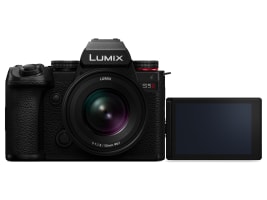
Pros
- Good autofocus
- excellent video quality
- powerful stabilization
- solid handling
Cons
- Noticeable rolling shutter
- not the best photo camera
This is Panasonic’s first hybrid phase-detect autofocus system, so I was very curious to see how it stacks up against those cameras. I also wanted to see if it would let you leave your gimbal at home, as the company suggests in its ads. To find out, I took it around Paris and my hometown of Gien, France.
Body and Handling
The S5 II’s body and control layout is identical to the S5, and that’s generally a good thing. At 740 grams, it is a bit heavier than its main rivals. However, it’s still a reasonably lightweight video camera that’s comfortable enough to shoot for a full day.
It has a big comfortable grip, along with lots of manual controls that let you change settings without the need to dip into menus. It has all the controls you’d hope for like a joystick, dedicated AF control and more. The record button is placed on top so it’s easy to find when vlogging, but it would be nice to have a record button on front like the GH6.
Gallery: Panasonic S5 II full-frame mirrorless camera review | 23 Photos
Gallery: Panasonic S5 II full-frame mirrorless camera review | 23 Photos
Should you need to use the menus, Panasonic has nailed that part, with well-organized categories that make important adjustments fairly easy to find. It’s also quite easy to customize things, so as with any camera, I’d recommend doing that for your own workstyle.
The 3-inch, 1.8 million dot rear display is the same one as before and is bright and sharp for video work. It of course fully articulates, so you can flip it around for vlogging, hold it high or low and more. The only drawback is that it can get tangled up with any cables, particularly the headphone jack.
Luckily, Panasonic boosted the OLED electronic viewfinder (EVF) resolution to 3.68 million dots from 2.34 million dots on the original S5. It’s now decently sharp and clear, addressing one of my biggest complaints of the last model.
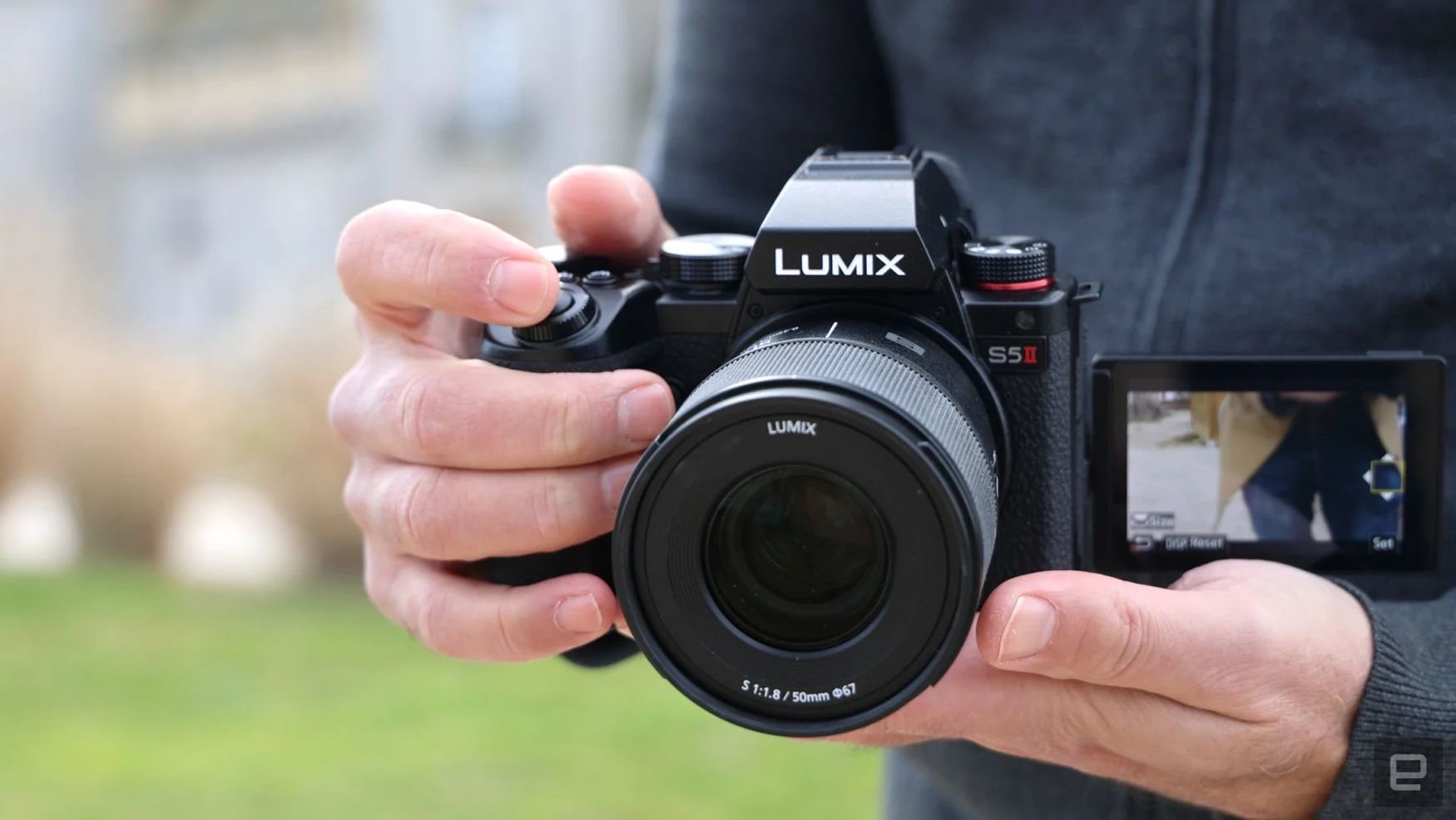
Steve Dent/Engadget
Another welcome update is two fast UHS-II card slots, rather than one UHS-II and one UHS-I slot on the S5. That allows for faster transfer speeds and more reliable backups, if you like to shoot video to two cards at once. It also now uses a full-sized, rather than a micro HDMI jack as before, making it far more reliable when using an external recorder.
There are of course headphone and mic jacks, but the S5 II now offers 4-channel recording via the DMW-XLR1 hotshoe audio adapter, just like the GH6. It also borrows the latter’s audio interface that gives you a central hub for all audio settings. It doesn’t have a dedicated button like the GH6, but you can assign any function button.
Finally, the batteries are borrowed from the S5 II, and deliver up to 470 shots on a charge or a solid two hours of 4K recording.
Video
Panasonic’s mirrorless cameras are primarily designed for video shooters, so let’s get into that first. The centerpiece of this camera is that new phase-detect autofocus, designed to eliminate the wobble or hunting that happened with past Panasonic models that had contrast-detect only autofocus. So how does it work for content creators
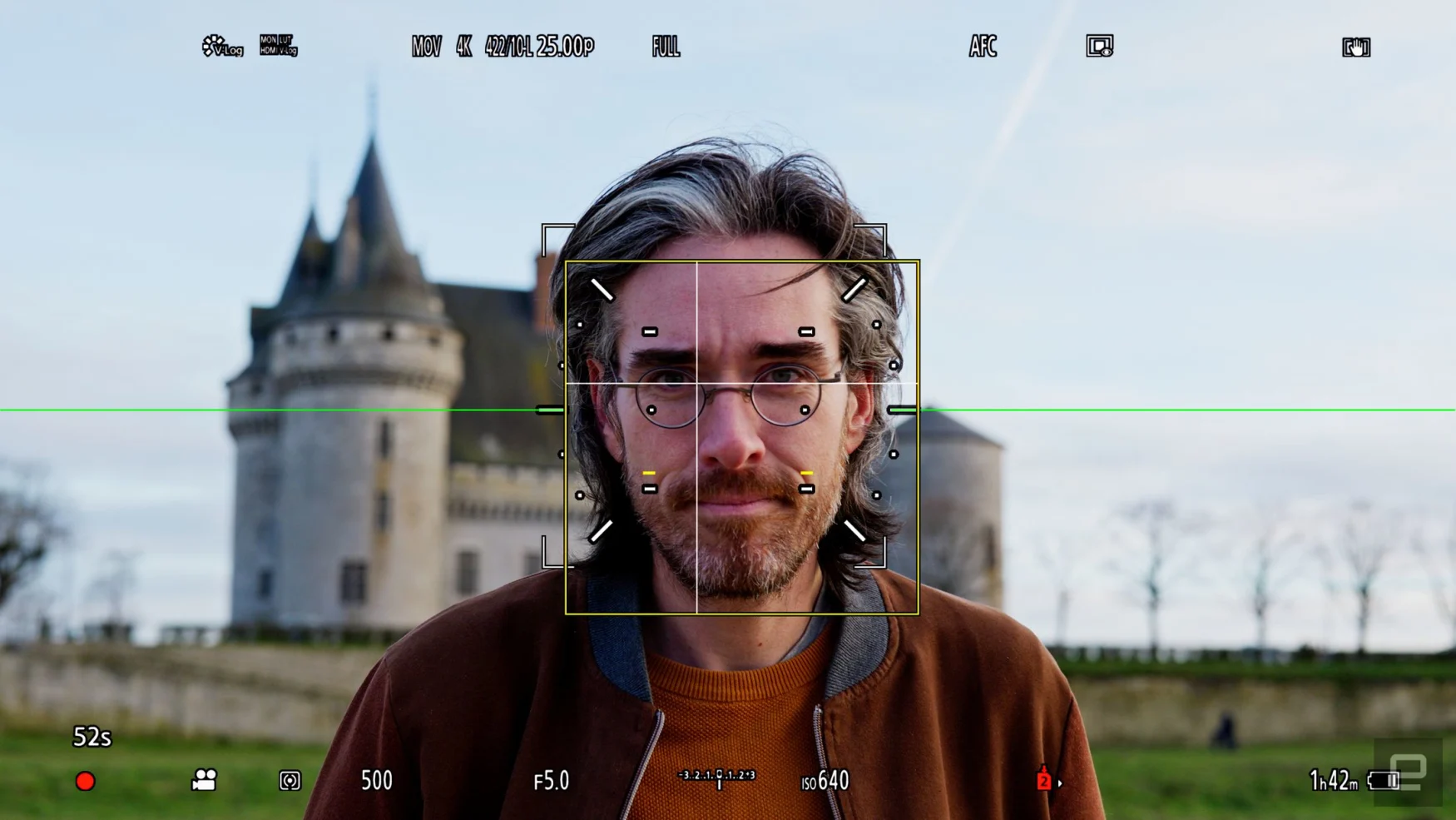
Steve Dent/Engadget
As with other recent models, the S5 II’s system includes regular continuous AF modes along with subject tracking, for both humans and animals. However, it’s not as sophisticated as recent rival cameras like the A7 IV and EOS R6II, though, as it can’t track things like cars and airplanes, and doesn’t distinguish between birds and other animals.
Luckily, the capabilities it does have are on par with those models. It smoothly tracks subjects and has very little lag if they move toward the camera, for example. Face and eye detection is good, though it struggles a bit if the subject turns, and can’t track their eyes if they’re not reasonably close to the camera. It’s also not quite as sticky as rival models.
Still, it generally tracks focus reliably for interviews, vlogging and other situations. More importantly, the pulsing, hunting and wobbling is completely gone, so you can now rely on the S5 II’s autofocus in most situations.
There is one caveat that may be important to some users. As YouTuber CameraOfChoice notes, the phase-detect AF works great at all 4K and 6K resolutions, and 1080 25p. However, the camera switches to contrast-detect AF at 10-bit 1080p 60 fps and 120 fps resolutions, along with 3.3K 422/10L 25p. I’ve reached out to Panasonic for more information, but if you use those resolutions frequently, you may need to look at a different model.
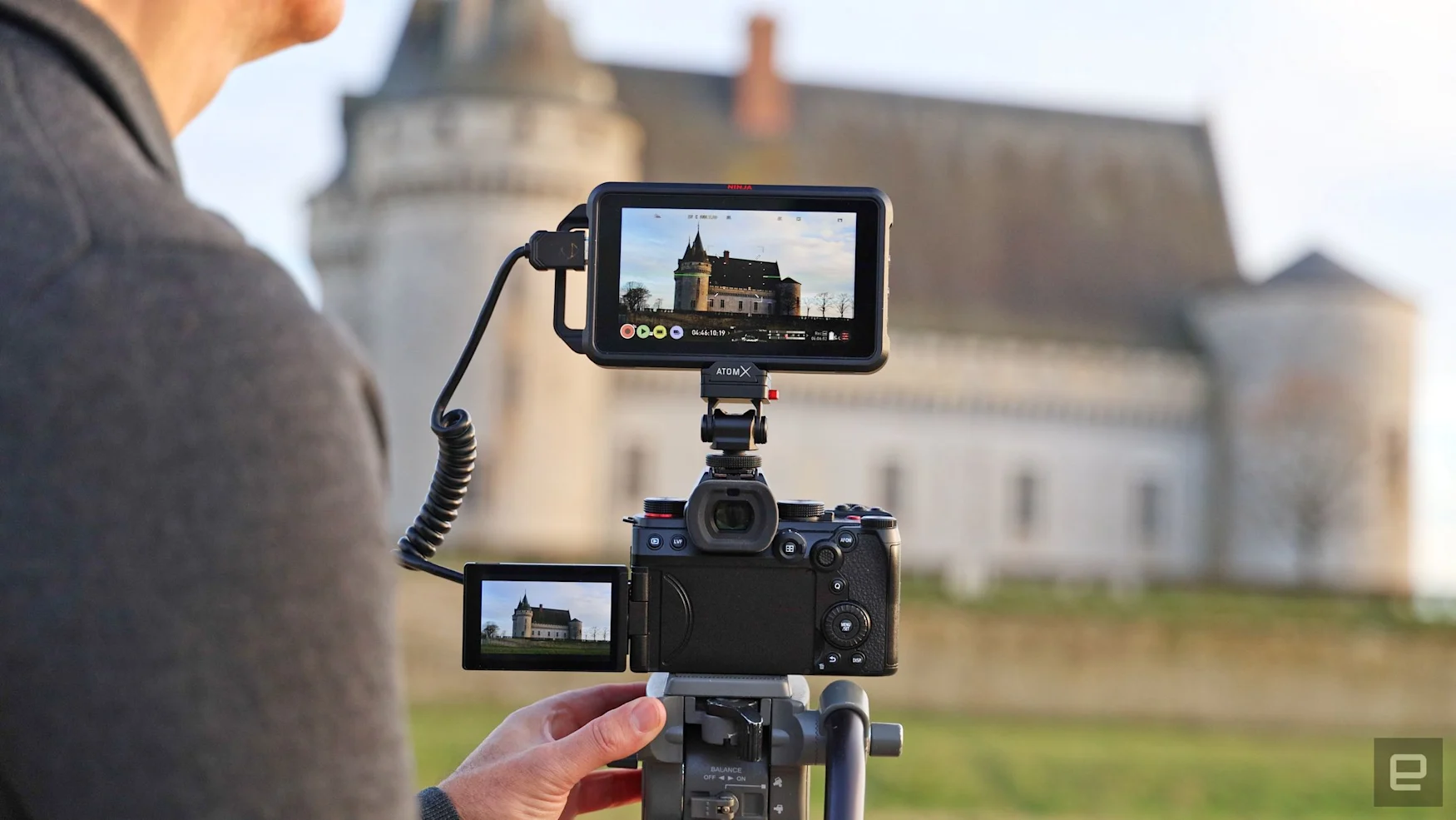
Steve Dent/Engadget
With autofocus issues mostly gone, the S5 II is a far more attractive vlogging and video camera thanks to its other powerful features.
You can shoot 5.9K video at 30p using the full width of the sensor, or full-width supersampled 4K at up to 30 fps. 60p 4K video is possible as well, but requires an APS-C crop and some loss of sharpness. The S5 II can also handle 4:3 anamorphic video at up to 6K using the full sensor width, or 3:2 “open gate” video that makes it easier to crop or deliver in social media formats.
There are few temperature-related time restrictions in any of these modes, thanks to the inclusion of a clever fan that only kicks in when you need it (below). Namely, there are no time restrictions on any video at 4K and below, including 1080p 120, while 6K is limited to 30 minutes. Panasonic is the only manufacturer to test its cameras at up to about 105 degrees Fahrenheit, so most users will likely never experience any problems.
As with most Panasonic cameras, you can shoot 10-bit video with V-log to boost dynamic range. And it’s easier than ever to monitor V-Log. You can not only choose a standard Rec.709 output, but display your own custom look-up-table or LUT, too. You can even record those LUTs as your final video output, giving you unlimited “looks” and potentially saving time in post.
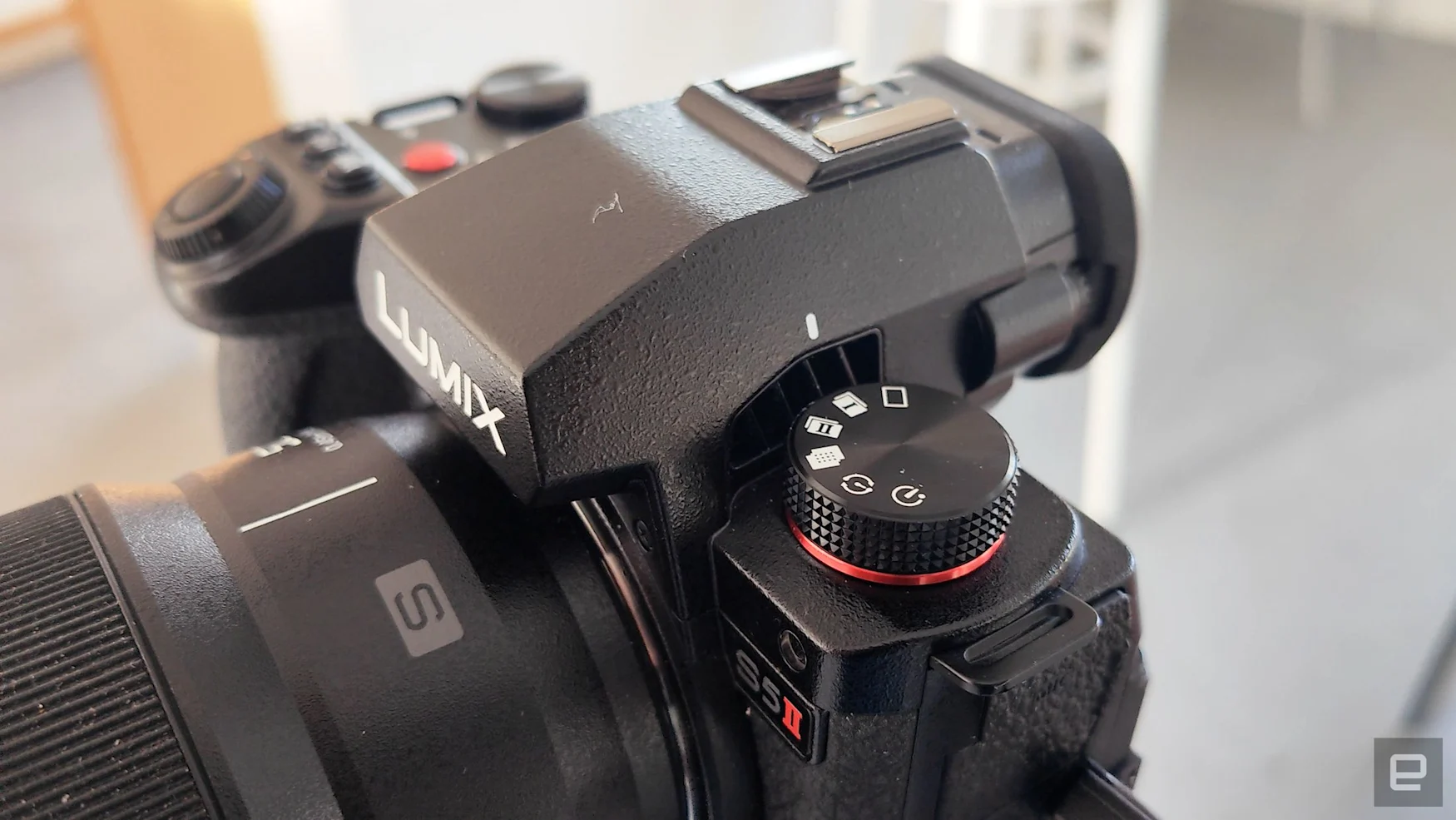
Steve Dent/Engadget
The main video drawback is the lowish data rates (200 Mbps and below) and the lack of any ProRes or All-I internal recording modes. There’s also no external RAW capture, though you’ll be able to add that later for a $200 fee. You can, however, capture other ProRes codecs to an Atomos Ninja V/V+ or BlackMagic Video Assist recorder.
And that brings up Panasonic’s upcoming S5 IIx, announced at the same time as the S5 II. It’s priced at $2,200 and is mostly identical in terms of features. However, the extra $200 gets you not only RAW external video included but also ProRes capture to an external SSD via the USB-C port. With a small price difference to get such a useful feature, a lot of people might want to wait for this model.
Another terrific new capability is the updated in-body stabilization borrowed from the GH6. It’s now much better at smoothing out vertical step motion than the S5, though there’s still some side-to-side sway. It also has a “Boost IS” for handheld video where you don’t need to move, keeping shots locked off like the camera’s on a tripod. Can it replace your gimbal? In some cases, yes, but you’ll have to work carefully as it still can’t match a gimbal’s smoothness.
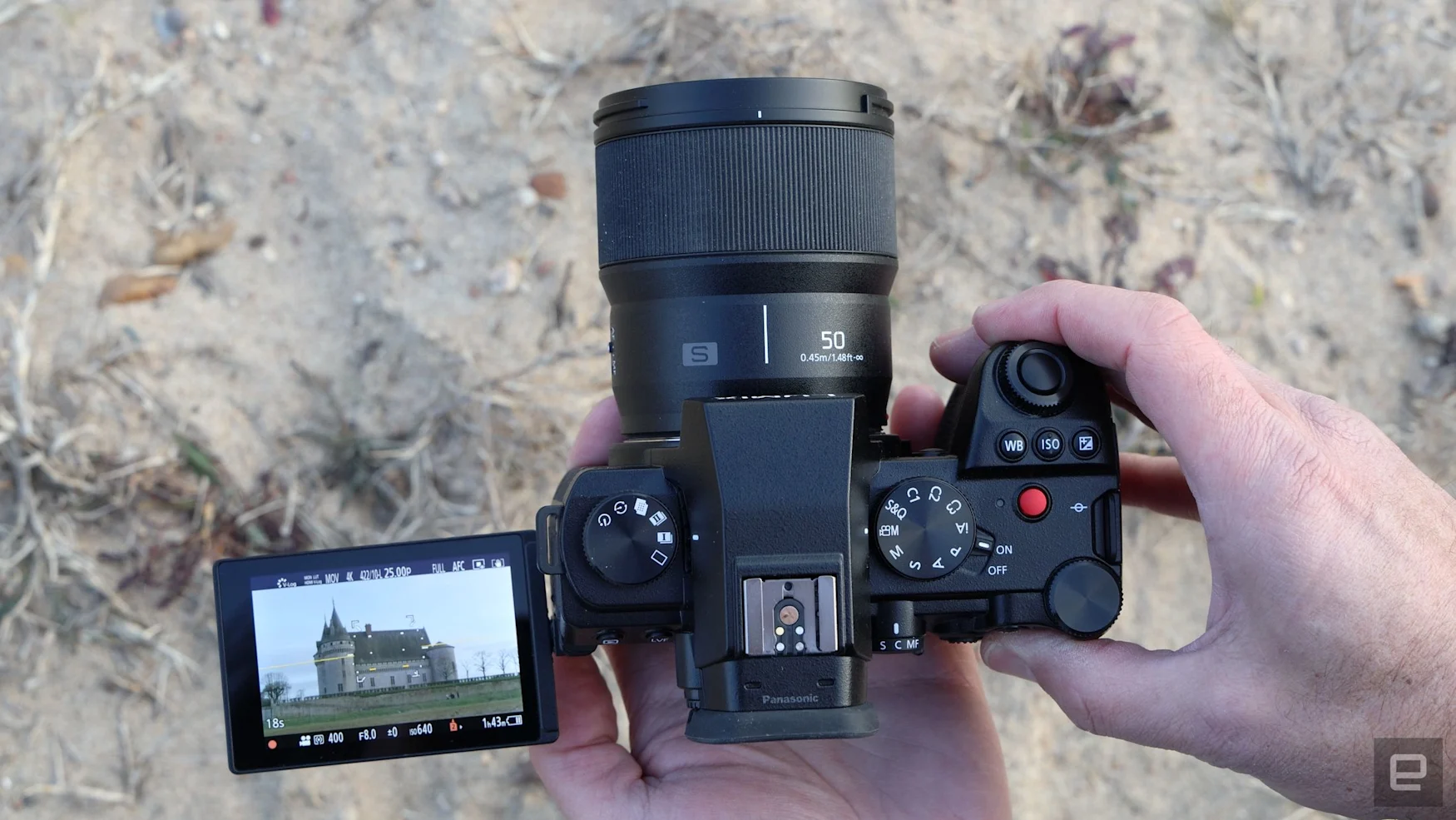
Steve Dent/Engadget
Video quality is excellent, with extremely sharp 4K 30p and 4K 60p that’s just a touch less so. Colors are accurate and pleasing straight out of the camera, with natural-looking flesh tones. The 10-bit V-log video delivers a very solid 14+ stops of dynamic range, just slightly below Nikon and Sony models. That gave me plenty of room for extra creativity or to correct over- and underexposed shots.
The S5 is also good in low light, thanks to Panasonic’s Dual Native ISO system. Don’t expect Sony A7S III-level performance, but the Dual ISO system really keeps noise down at ISOs as high as 12,800 or even 25,600. You’ll of course see noise when you boost shadows at those ISOs, but the grain looks quite natural. Anything below ISO 6400 has very little visible noise. One quirk is that it’s best to use ISO 4000 instead of ISO 3200, as the Dual ISO is set for ISO 640 and ISO 4000.
As for rolling shutter, the S5 II is middling in this regard. It’s most noticeable in 6K or supersampled 4K modes, but not bad at all with an APS-C crop. I’d rate it as better than the higher-resolution A7 IV and about the same as Canon’s R6 II.
Finally, Panasonic offers a lot of ways to monitor video not seen on rival cameras, including waveforms and vectorscopes. Those features are very useful to video pros, helping them nail exposure and color accuracy. And as mentioned, audio is very easy to work with thanks to a dedicated hub to adjust settings, along with both line and mic inputs.
Photography
Gallery: Panasonic S5 II sample image gallery | 22 Photos
Gallery: Panasonic S5 II sample image gallery | 22 Photos
Most people likely won’t buy the S5 II for photography, but it’s not bad at all in this department. It can handle bursts at up to 7 fps with the mechanical shutter or 30 fps in electronic mode. The buffer is quite impressive, as it allows for 200 shots in RAW before throttling – a full 6-seconds of uninterrupted 30 fps burst shooting.
At those speeds the autofocus largely keeps up, though it’s not quite as fast or accurate as the R6 II and A7 IV AF systems. As with video, the photo autofocus isn’t quite as smart or tenacious with subjects as Sony’s A7 IV. Still, it’s much better than the contrast-detect AF of the last model and up there with recent Nikon and Fujifilm AF systems.
Despite the fast electronic burst speeds, the S5 II has limited usage as a sports camera. The rolling shutter would impact shots with fast moving subjects, unless you use it in APS-C mode. That’s a feasible option, but it reduces the resolution by half.
Credit: Source link


Comments are closed.